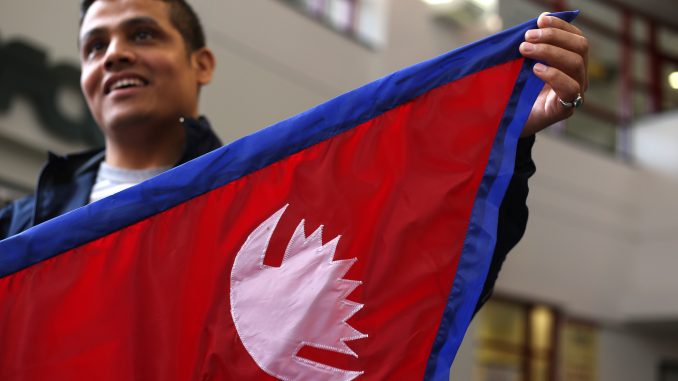
When Parichhya Luitel’s grandfather visited the United States, he made sure to bring his topi, a piece of headwear unique to the country of Nepal. He wanted to stand out to other Nepalis he might meet in the country, she said.
Keshar Ghimire, who is studying for a Ph.D. in Economics here and wore that headgear when meeting with The Temple News, said it’s native to a town in the valley around Kathmandu, Nepal’s capital. And he had an emblem pinned to it with the nation’s flag and crossed khukuri, curved blades used both in the military and for farm work.
“There are different kind of topi, but in general they kind of bring us Nepalis together,” Ghimire said.
Nepali people away from home seem to have a way of finding each other. Ghimire and Luitel are two in a group of students who’ve come together to fundraise for relief in Nepal after a devastating 7.9-magnitude earthquake left many residents without their homes and others in need of rescue.
After the disaster, “going back home won’t be the same,” Luitel said. Five others, huddled around a reporter in the lobby of the Student Center, nodded solemnly.
While some of the students have considered going back home to help, they concluded the current course of action is to donate.
“I’m sure everyone at first hearing of this thought of packing up and leaving right away,” Ghimire said. “We have these stories about Haiti and people going in there, volunteers creating a bigger mess than actually helping out. You really have to evaluate your expertise. I could actually go right now, and I want to go, but I would have to evaluate what impact I would create.”

“Maybe just being here and pooling together some funds and making it available to the people who are actually on the ground right now, that could be a better strategy,” he added.
The students’ campaign, an Indiegogo page titled the Temple Community for Nepal Earthquake Relief Fund, has raised more than $4,000 as of Friday night. That money will go to the Help Nepal Network, a charity that focused on developing the country’s lagging public education system and other local issues but has now greatly shifted its emphasis toward earthquake relief.
HNN “has already been working” in Nepal, said Saru Taujale, who is working toward a Ph.D. in Engineering. “They are connected to the country, and they go to the rural villages too,” she said.
Aashish Tuladhar, a graduate student studying chemistry, said the Dharahara tower in Kathmandu, one of several UNESCO World Heritage sites destroyed during the earthquake, is “maybe 100 feet” from his house. He said money will be needed to rebuild affected parts of the country, but the more urgent issue is that people may be in need of rescue. Most media coverage, he added, has focused on Kathmandu, but rural areas are still in need of help.

“There are people outside the capital that the military hasn’t reached yet,” he said.
Taujale added that insurance is very uncommon in Nepal.
“I think that’s one of the last things you worry about in an underdeveloped country,” Luitel said.
Still, while the group has intentions to visit Nepal again someday, they haven’t ruled out taking the knowledge from their education here with them on a more permanent return home. Tuladhar and Taujale said they have heard of many Nepali students who were educated abroad and are now returning.
“They’re going back after getting an education and walking to these remote areas,” Tuladhar said. “Going back, I think, points to values we’re taught from birth.” Earlier in the conversation, the group had listed plenty: Hospitality. Determination. A penchant for sticking together. With smiles, they pointed out a story of a New Zealand TV reporter who was offered lunch after an interview with a woman who said she had lost “everything.”
“Nepalis are known to be very strong, resilient people,” Ghimire said. “In these tough times, they might be asking for help, but they will bounce back.”
Joe Brandt can be reached at jbrandt@temple.edu or on Twitter @JBrandt_TU.


Be the first to comment